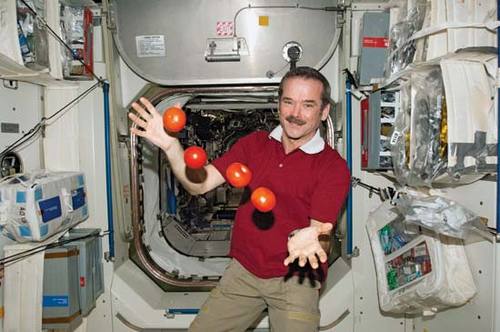Weightless
 What is the period of rotation (in minutes) of the Earth so as to make any object weight-less on its equator?
What is the period of rotation (in minutes) of the Earth so as to make any object weight-less on its equator?
Details and Assumptions
- The radius of the Earth is R = 6 × 1 0 6 m .
- The gravitational acceleration is g = 9 . 8 m/s 2 .
The answer is 81.9.
This section requires Javascript.
You are seeing this because something didn't load right. We suggest you, (a) try
refreshing the page, (b) enabling javascript if it is disabled on your browser and,
finally, (c)
loading the
non-javascript version of this page
. We're sorry about the hassle.
2 solutions
Hey! This is probably a silly question but why does a scale measure the apparent weight of a person and not its real weight. With Newton's third law we can assume that a person standing on scale exerts a force upon the scale equal to m*g and thus that the scale exerts itself a force N=-mg on the person. Or is there a centrifugal force that compensates or what?
Log in to reply
there is nothing like real weight, weight is the normal reaction from surface you feel as your weight where as you are confusing it with mass which is constant. Mass is mass ( kinda weird to feel) whereas weight is Force.
I was told that it’s because scales are calibrated to automatically take the acceleration due to gravity off to give you your mass in kg
To the equator the centrifugal acceleration is:
a c f = ω 2 R , with ω = T 2 π , T period of rotation;
the hypotesis that any object is weight-less on the equator implies: ∣ a c f ∣ = ∣ g ∣
thus: ω 2 R = g , ω = R g , T = ω 2 π = 2 π g R ≡ 6 0 2 π g R , in minutes, hence substituting values:
T = 6 0 2 π 9 . 8 6 × 1 0 6 = 8 1 . 9 4 minutes
We have to first realize that by weight-less, we are referring to the apparent weight , which is what is obtained on a scale. The real weight force m g will always be there. The spinning of the Earth causes this discrepancy as it is a non-inertial reference frame.
Since the Earth is spinning there must be a net force inwards(centripetal force). This is caused by the imbalance between the real weight w and the normal force of the Earth on the object N . This normal force N is what a scale measures, thus W a p p a r e n t = N